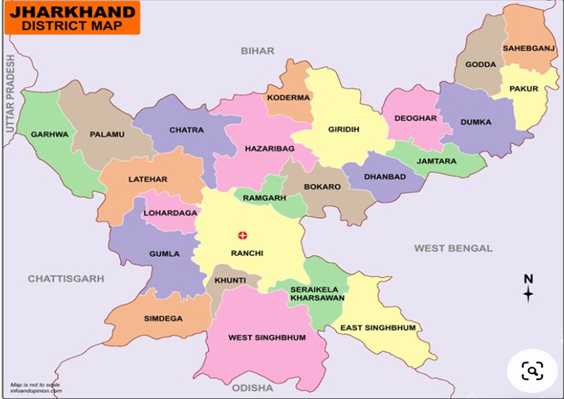(General Studies II – International Relations – India and its Neighborhood- Relations. Bilateral, Regional and Global Groupings and Agreements involving India and/or affecting India’s interests.)
- India-China relations have been historically complex, shaped by both cooperation and conflict. In the current geopolitical scenario, India faces a critical challenge in balancing its engagement with China while strengthening its ties with Quad partners (Australia, Japan, and the U.S.).
- With China’s assertiveness growing, particularly in the Indo-Pacific and along the Himalayan borders, India must proceed cautiously to safeguard its interests without provoking an unnecessary escalation of tensions

History of Indo-China Relations:
- 1950s-1962: Relations began on a cooperative note with the signing of the 1954 Panchsheel Agreement, promoting peaceful coexistence. However, China’s claims over Tibet and border disputes led to the Sino-Indian War in 1962, where India suffered a humiliating defeat.
- Post-1962: Diplomatic ties remained strained for decades, with China continuing to claim large parts of Indian territory, particularly in Ladakh and Arunachal Pradesh.
- 1988: The breakthrough came when Indian Prime Minister Rajiv Gandhi visited China, leading to the normalization of relations and the establishment of mechanisms to handle border disputes peacefully.
- 1993-1996 Agreements: Both sides signed the Border Peace and Tranquility Agreement (1993) and the Confidence Building Measures (1996), aiming to reduce the risk of conflict along the Line of Actual Control (LAC). Despite this, incursions and military stand-offs persisted.
- 2017 Doklam Standoff: Tensions flared again when Indian and Chinese troops faced off in Doklam, near the India-Bhutan-China trijunction, highlighting China’s strategic ambitions.
- 2020 Galwan Valley Clash: A violent clash in the Galwan Valley resulted in the first fatalities on the border in 45 years, significantly deteriorating bilateral relations. This led to a series of military and diplomatic talks, but disengagement has been slow and partial.

Efforts by India to Counter China’s Threat:
- Military Modernization: In response to China’s military posturing, India has enhanced its defensive capabilities along the entire length of the LAC, especially in eastern Ladakh. The Indian Army has deployed advanced systems like K9 Vajra howitzers, BrahMos missiles, and UAVs to strengthen its deterrence posture.
- Border Infrastructure: India has accelerated the construction of roads, tunnels, and airbases along the Himalayan frontier. Projects like the Atal Tunnel in Himachal Pradesh and new bridges in Arunachal Pradesh are aimed at improving connectivity to remote areas, enabling faster troop movement.
- Diplomatic Initiatives: Despite military tensions, India continues to engage with China through diplomatic and military channels. Regular meetings between Special Representatives and Working Mechanisms for Consultation and Coordination (WMCC) have been held, though with limited success in de-escalating tensions in key friction points like Depsang Plains and Demchok.
- Economic and Cybersecurity Measures: India has adopted a more defensive economic strategy by banning over 200 Chinese apps, including TikTok, citing data privacy concerns, and tightening FDI regulations to prevent Chinese investment in sensitive sectors. Additionally, India is actively working to reduce its trade deficit with China, which remains substantial, with Indian imports from China amounting to $98 billion in 2022-23, far outstripping exports.
The Role of the Quad: The Quad has emerged as a pivotal element of India’s strategy to counterbalance China’s rise, particularly in the Indo-Pacific. While the Quad does not formally mention China in its communiqués, its emphasis on a “free, open, and inclusive Indo-Pacific” is widely seen as a response to China’s assertiveness in the region.
- Wilmington Declaration (2024): This recent Quad summit held in the U.S. marked a significant milestone. While avoiding direct references to China, the Quad nations have firmed up their security cooperation, signaling a stronger alignment to counter Chinese influence across the Indo-Pacific. Importantly, the Quad’s initiatives include joint military exercises like the Malabar naval exercises, and cooperation on maritime domain awareness, cyber security, and critical technologies.
- Strategic Autonomy: India’s approach within the Quad has been cautious, ensuring it does not appear too aligned with any anti-China military alliance. India seeks to use the Quad as a strategic lever without compromising its long-held non-alignment policy. India’s reluctance to participate in any formal military alliance is driven by concerns over provoking China, which views the Quad as a containment strategy led by the U.S.
- China’s View on the Quad: China has repeatedly criticized the Quad as a “mini-NATO”, aimed at encircling and containing its rise. Beijing’s perception of India’s growing engagement with the Quad has added another layer of strain to bilateral relations, with China viewing it as part of a larger U.S.-led effort to curtail its ambitions in the Indo-Pacific.
India’s geopolitical strategy must strike a careful balance between countering China’s growing assertiveness and avoiding direct confrontation. While the Quad offers India an avenue to strengthen its security ties with like-minded democracies, it is crucial that India maintains its strategic autonomy. A nuanced approach is needed to ensure that India neither provokes an escalation with China nor compromises its long-term strategic interests by aligning too closely with the West’s agenda. The Indo-China equation remains delicate, requiring careful diplomacy and sustained vigilance.







